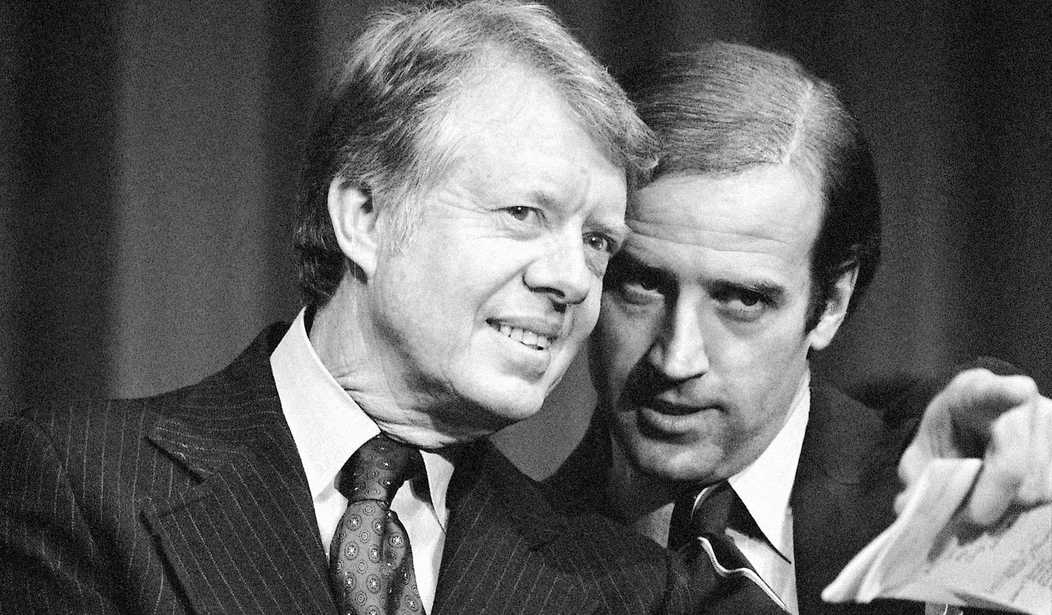Did inflation hit a new decade-long record in October? The 8.6% year-on-year pace tied the report from September, the Associated Press reports:
Inflation at the wholesale level rose 8.6% last month from a year earlier, matching September’s record annual gain and offering more evidence that inflationary pressures are not yet easing.
The Labor Department reported Tuesday that its producer price index — which measures inflation before it hits consumers — rose 0.6% last month from September. Excluding volatile food and energy prices, wholesale inflation was up 0.4% in October from September and 6.8% from a year ago.
More than 60% of the September-October increase in overall producer prices was caused by a 1.2% increase in the price of wholesale goods as opposed to services.
Not so fast. October’s annual inflation figure outstripped September’s, CNBC’s Jeff Cox points out:
Wholesale prices rose 8.6% from a year ago in October, their highest annual pace in records going back nearly 11 years, the Labor Department said Tuesday.
The government’s producer price index, which serves as a gauge of finial demand prices from goods-producers, rose 0.6% for the month, in line with Dow Jones estimates and an indicator that inflation pressures are continuing to pressure the U.S. economy. The monthly pace was faster than the 0.5% increase in September.
Stripping out food, trade and energy prices, the index increased 0.4% month over month, slightly below the 0.5% estimate but an elevated pace from September’s 0.1% gain. On a year-over-year basis, core producer prices increased 6.2%. The year-over-year records go back to November 2010.
Elevated demands for goods over services again led the inflation story, with the price increases for final demand goods accounting for more than 60% of the index’s increase. Goods prices rose 1.2% compared to just a 0.2% increase for services, while construction prices jumped 6.6%.
So in any configuration, inflation got worse in October rather than better. Either way this is bad news, even when laughably stripping out “volatile food and energy prices.” American households spend much of their disposable income on food and energy, and apparently even more of it than usual these days.
These stratospheric rates of inflation have buried the supposed gains workers made in the pandemic. Democrats created disincentives with subsidized unemployment that created initial labor shortages and artificial wage hikes, then patted themselves on the back for creating a back-door minimum-wage hike. Thanks to the labor shortages as well as sugar-high consumption demand fueled by repeated drops of helicopter money, any gains that workers have made in wage increases has been negated and then some by a relative loss in buying power. And while those labor-shortage wage gains will peter out soon, the impact of runaway inflation will not subside, nor will it get reversed.
Even before this announcement came out, The Hill warned Democrats and the White House about the bleak prospects for inflation this winter. Not only will the shortages continue, they will hit many Americans where they live — literally:
Businesses are facing labor shortages, which are likely to lead to inconveniences for Americans traveling during the holiday season.
Rising gas prices will add to those headaches, and now administration officials are warning that heating homes also will cost more this year.
And as it gets colder, inside gatherings could lead to more coronavirus cases, which have started to flatline after weeks in which they have fallen.
It all adds up to a difficult winter and potentially troublesome holiday season for President Biden, who already has seen his approval numbers drop amid a challenging few months for his administration. Fears that Biden’s party could lose the House and Senate in next year’s midterms are also up after a disappointing showing in last week’s elections in Virginia and New Jersey.
“It’s pretty bleak,” one Democratic strategist who spoke to The Hill said. “I don’t think people realize where we are as a party right now.”
It will get even more bleak if Congress continues to press the Fed to print more money to goose demand even further. The infrastructure bill already will have some inflationary impact, but Biden’s BBB reconciliation package will stoke inflationary fires even further. The BIF at least addresses some issues with supply chain bottlenecks that might mitigate its other effects, but the BBB has nothing at all to mitigate the entirely predictable inflationary impact of free-spending policies over the last nineteen months.
The Fed will have to act more quickly to raise interest rates now to deal with what clearly isn’t “transitory” inflation. That means we are rapidly entering Carter Country — that late-70s malaise that birthed the “misery index” that added the inflation rate to the latest mortgage interest rates. Right now that’s above 10%, which might be the first time in decades it’s hit double digits.








Join the conversation as a VIP Member